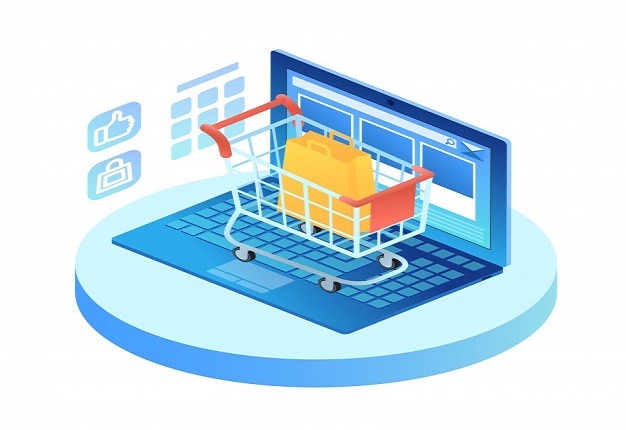Checkout Abandonment—what it is and How to Reduce it
Your ultimate goal is to attract customers to your online business site, so you must create an ideal path for them to follow as they navigate through your product pages and to the payment page through an online payment gateway. Customers will abandon the checkout if you make a single mistake, so you must understand how to reduce checkout abandonment and increase conversions.

This one blunder can cost you a lot of money and hurt your bottom line. One of the leading causes of checkout abandonment is a complicated checkout process – naturally, a complicated payment process discourages customers from completing the transaction.
The difference between checkout abandonment and cart abandonment
Checkout abandonment occurs when a customer completes their journey, adds items to their cart, and is ready to pay – but leaves the site after entering their payment information at the checkout, whether it is a registered account or a guest checkout.
Cart abandonment is similar to checkout abandonment, but the main difference is the stage at which the customer leaves the site. It is any stage in which the cart is abandoned after items have been added but before checkout.
Divide the total number of completed transactions by the total number of initiated transactions to determine your checkout abandonment rate. To calculate the percentage, subtract this value from one and multiply by 100. Because checkout abandonment occurs after a customer visits the cart, the rate at which it occurs should be lower than the rate of cart abandonment.
The most common reasons why customers abandon the checkout
The final steps in the checkout are critical for closing sales, and there have been several studies on the causes of checkout abandonment. The top reasons for checkout abandonment are listed below.
1. Complex checkout process
The more steps in the checkout process and the longer it takes, the more frustrated the customer, which leads to checkout abandonment. The average checkout flow has 5.08 steps, according to a stuy so the goal should be a checkout flow of fewer than 5 steps.
Optimizing the customer journey by reducing the number of steps to checkout and removing any distractions, non-related links, social buttons, graphic elements, and so on can help here.
Ensure that customers are on the same page throughout the checkout process. Don't send them to an external best online payment gateway service because it will hurt conversion. It's also critical to provide a "guest checkout" option, especially for first-time buyers who want to complete the process quickly.
2. Slow-loading pages
According to one study, a 2-second delay in load time during a transaction leads to an 87 percent cart abandonment rate because it fails to build the user's trust or confidence in the site. Customers are impatient, so avoiding load time delays is critical, particularly on mobile, where people want and expect quick shopping opportunities while on the go. It's a good idea to remove anything that could slow down the page's loading speed.
The "remember me" option in the checkout can also help speed up the process by eliminating the need for customers to type in their credit card number each time they want to buy something. Consider how convenient it would be for them to pay with a single click rather than entering credit card information.

3. Checkout errors and downtimes
Checkout errors, especially when they occur frequently, are one of the leading causes of checkout abandonment, as customers will abandon the transaction. They lose faith in your service, and you can bet those customers will go elsewhere to purchase similar products.
Your website should be tested and monitored on a regular basis. Check everything twice, and edit and proofread your payment pages to ensure they are flawless and error-free. Also, ensure that your current payment provider is a trustworthy partner. You lose revenue due to unplanned outages if it reports frequent downtime.
4. Checkout security concerns
According to statistics, approximately 20% of customers will abandon their checkout if they feel unsure, or even unsafe, due to the page they're on. If something doesn't feel right on the payment page, they won't enter their credit card information.
Customers must feel safe on your website, especially when paying, so you must reassure them that their sensitive data is well protected during the checkout process. It's all about the security tools and solutions you employ, so your website should be certified for high-encryption security. Second, consider outsourcing your payment process to a reputable payment provider that is PCI compliant. Use a payment platform that offers dependable fraud prevention tools.
You can include trust logos from well-known trust organizations, as well as card brand logos. You should also take a look at the design of your payment pages; poorly designed pages raise red flags. When customers arrive at a payment page that looks nothing like your online store, it sets off an alarm in their minds. You can also boost your website's credibility by including testimonials and reviews.
5. Hard-to-understand error indicators
Errors should be communicated clearly, and messages like "Some fields are incorrect" should be avoided, as some users may misinterpret the payment form. Your customers must be able to easily fill out the checkout fields. Matching the credit card field sequence to the physical card sequence can also help, making data entry more intuitive.
6. Declined credit card
Declined transactions also prevent users from attempting to make another purchase on a website. To reduce the number of mistakes a user can make when entering payment data, make sure the payment form design and all of the information are as clear as possible.
Also, make certain that the payment provider you work with offers a fraud system with dynamic rules that adapt quickly to specific industries and the current situation so that falsely rejected payments are avoided. To keep your finger on the pulse of the checkout process, you should be able to manage fraud rules proactively.
Credit card checkout UX at the forefront
According to one checkout study, 58 percent of the top 60 e-commerce sites have "good" or "acceptable" checkout UX performance, and no sites have a state-of-the-art checkout. The statistics could be better, but the results are more promising than in 2016 when only 37% of sites performed as well.
According to the study, the average site has 32 preventable usability issues in their checkout flow, indicating that there is still a lot of room for improvement.
Discover the best credit card checkout UX practices to boost conversions.
Stick to the rule that the more steps a transaction has, the less likely it is that an almost buyer will become a customer. Analyze your purchase funnels on a regular basis to identify areas where your customers may be turned off, and keep in mind that not every customer abandons the checkout process for the same reason.
Wrapping Up
You can reduce and even eliminate checkout abandonment by offering your customers a streamlined payment process based on an excellent user experience. Choose a payment provider that provides best-in-class embedded payments, optimized checkout, and payment APIs that enable you to customize the entire payment process.
Even though it is impossible to ensure that every customer completes a purchase, you now know what you can do to improve your checkout experience and avoid the concerns that keep most merchants awake at night. It is critical to reducing the number of steps required to make a payment. Customers will have less time to reconsider their purchase, resulting in a better user experience.
Looking for an online payment gateway service provider with an easy-to-use checkout and payment system that is optimized for conversions? Go ahead and try!Post Your Ad Here
Comments